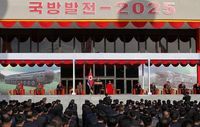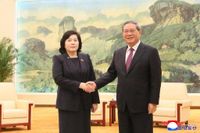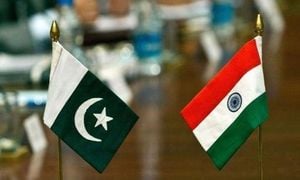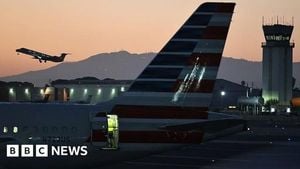In a move signaling both diplomatic warmth and strategic calculation, Chinese Premier Li Qiang is set to embark on a three-day visit to North Korea from Thursday, October 9, 2025, through Saturday, October 11, 2025. The trip, announced by China’s Foreign Ministry and widely reported by global outlets including South China Morning Post and Yonhap, marks the highest-level visit by a Chinese official to North Korea since 2019 and underlines a renewed commitment to the countries’ historic alliance.
Premier Li’s visit coincides with the 80th anniversary of the founding of North Korea’s ruling Workers’ Party—a milestone Pyongyang is celebrating with considerable fanfare. According to the official Korean Central News Agency (KCNA), Li will be attending at the invitation of North Korea, highlighting the event’s significance on both sides of the border. The Chinese delegation’s presence underscores Beijing’s intent to “enhance strategic communication, strengthen exchanges and cooperation and advance” the traditional friendship between the two nations, as stated by China’s Foreign Ministry.
North Korea, for its part, is pulling out all the stops. A large-scale military parade is scheduled for Friday, October 10, 2025, with leader Kim Jong Un presiding. The event is expected to showcase not just North Korea’s military might, but also its latest technological advances. South Korean officials, cited by Yonhap, report that Pyongyang is preparing to welcome tens of thousands of people, with the military expected to unveil a new generation of strategic missiles and advanced weapons systems. Among the anticipated highlights: a solid-fuel Hwasong-20 intercontinental ballistic missile, reportedly capable of reaching the American mainland from North Korea.
Kim Jong Un, speaking at the opening of an exhibition of Pyongyang’s latest weapons, made clear his ambitions. "It features the recent results of the important projects undertaken to put the nation’s military capabilities on an increasingly modern, advanced footing with its nuclear deterrent as the backbone," he said, according to KCNA. Over the weekend, Kim also pledged to develop additional military measures and allocate more strategic assets in response to what he described as the growing build-up of U.S. forces in South Korea. "In direct proportion to the build-up of US forces in Korea, our strategic interest in the region has also increased, and we’ve accordingly allocated special assets to key targets of interest," Kim was quoted as saying.
China’s Premier Li Qiang, considered second in power only to President Xi Jinping, will be the most senior Beijing official to attend a North Korean military parade this century, according to South China Morning Post. The last time a Chinese premier visited North Korea was in 2009, and Xi Jinping himself has only made one visit to Pyongyang during his presidency, back in 2019. High-level contacts, however, have picked up recently: Zhao Leji, another top Chinese official, traveled to Pyongyang in April 2024 to mark the 75th anniversary of diplomatic ties, and just last month, Kim Jong Un visited Beijing for events commemorating the 80th anniversary of Japan’s surrender in World War II, holding his first in-person talks with Xi Jinping in over six years.
This renewed back-and-forth comes amid shifting dynamics in the region. North Korea’s deepening military cooperation with Russia—most notably, reports of North Korean troops being deployed to Ukraine—has raised eyebrows in Beijing. At the same time, China remains North Korea’s closest economic ally, with a relationship that stretches back to the Korean War, often described as one of “blood brothers.” Yet, as Pyongyang has sought to balance its reliance on Beijing by strengthening ties with Moscow, China appears intent on reasserting its influence.
“It is an unswerving strategic policy of the Chinese government and the Communist Party to maintain, consolidate and develop relations with North Korea,” the Chinese foreign ministry said in a statement reported by BBC. The ministry described the two countries as “traditional friends and neighbours,” emphasizing that the visit is guided by the “important consensus reached by the top leaders of the two parties and countries.”
Li’s visit also comes at a time of broader diplomatic maneuvering in Northeast Asia. President Xi Jinping is expected to travel to South Korea later in October 2025 for the Asia-Pacific Economic Cooperation (APEC) forum, where a meeting with U.S. President Donald Trump is anticipated. South Korean President Lee Jae-myung, who has advocated for a resumption of dialogue with Pyongyang, recently called on Beijing to help facilitate talks, emphasizing the need for “denuclearisation and peace on the Korean peninsula.” In the weeks following Kim’s meeting with Xi, South Korean Foreign Minister Cho Hyun traveled to Beijing to reinforce these calls for engagement.
The guest list for the Workers’ Party anniversary celebrations in Pyongyang reflects the event’s international significance. Russia is sending former president Dmitry Medvedev, chairman of the ruling United Russia Party, as part of a Moscow delegation—an indication of the deepening ties between Pyongyang and Moscow since Russia’s 2022 invasion of Ukraine. Vietnamese Communist Party chief To Lam will also attend, marking the first visit by a Vietnamese leader to North Korea since 2007. Lao President Thongloun Sisoulith, who serves as general secretary of the Lao People’s Revolutionary Party, is set to be present as well.
North Korea’s Air Koryo operated a special flight from Beijing early Tuesday morning, October 7, 2025, to ferry guests to the celebrations in Pyongyang, underscoring the logistical scale of the event. The South Korean military, meanwhile, has detected increased movement of vehicles and military equipment in and around Pyongyang, further reinforcing expectations of a grand military spectacle.
Li Qiang’s itinerary is not limited to ceremonial appearances. Analysts see the visit as a chance for Beijing to balance its relationships in the region, especially with Xi Jinping’s upcoming trip to South Korea. China’s approach, as articulated by the foreign ministry, is to “strengthen strategic communication, enhance exchanges and cooperation, and promote the continuous development of the traditional friendly and cooperative relations.” The timing is particularly notable, as it follows a series of high-profile exchanges—including North Korean Foreign Minister Choe Son-hui’s visit to Beijing last month to reaffirm Pyongyang’s support for China’s global role.
For North Korea, the parade and accompanying festivities are a chance to project strength, unity, and technological progress at a time of mounting international scrutiny. For China, the visit is an opportunity to reaffirm its influence in Pyongyang, maintain stability on its northeastern border, and signal its ongoing relevance in the shifting geopolitics of East Asia.
As the world watches the pageantry unfold in Pyongyang, the presence of Premier Li Qiang—and the diplomatic choreography surrounding his visit—offers a vivid snapshot of how history, strategy, and symbolism continue to shape the Korean peninsula’s future.





